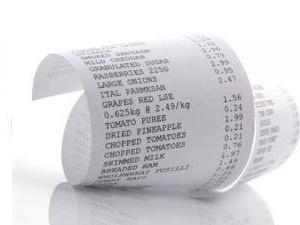The tax systems of modern states can operate on a variety of principles. The main task of the authorities, regardless of the specifics of the national tax system, is to ensure the largest possible amount of budget revenues. To do this, the authorities can use the widest range of methods. Which of them are most common in Russian and world practice? How do they compare with one or another variety of fees?

Tax collection: the main ways
Consider the main methods of tax collection that are highlighted by modern researchers. A widespread approach, which involves the formation of a list that includes methods such as:
- cadastral,
- declarative
- withdrawal before income,
- charge on expenses,
- exemption during consumption,
- administrative method.
What are their specifics?
The cadastral method of tax collection involves the collection of appropriate payments based on information recorded in the state cadastre. This source includes information about objects of taxation as provided by law. These may be residential real estate, plots. The tax collection method under consideration involves the formation of average profitability indicators that do not require a detailed calculation of the tax base for each property owned by citizens or organizations.

The declaration method of tax collection assumes that the relevant payments are calculated on the basis of reporting documents that are made up of the taxpayer.
The method, which involves charging a fee before the payer receives one or another income, assumes that the necessary percentage of deductions to the budget is made from the accrued but not yet received by the entity revenue. An example is the calculation and payment of personal income tax from the salary of an employee. This amount - if certain deductions for it are not applied, the employer is obliged to pay to the budget even before paying the employee a salary. Taxes may be levied when payers make expenses. It can be noted that indirect taxes on the method of collection in question are especially common. For example, if we talk about VAT, then de jure the obligation to calculate it and pay to the budget is assigned to commercial enterprises. However, the de facto payer is the buyer of a particular product - since this fee is usually included in the selling price of the corresponding product.

There are ways to levy taxes, involving the calculation and collection of necessary payments at the time the payer makes certain expenses. Such may be, for example, fees from car owners who drive on toll roads that are in state or municipal ownership.
There is also an administrative method - in which the tax authorities calculate the estimated amount of taxpayer income and establish an appropriate payment obligation for it.
Tax items
The methods of collecting payments to the budget that we have noted have much in common - for example, in terms of involving certain tax elements in determining its value. Among them: base, rate, frequency, various factors. As a rule, the first element is determined by the activities of the taxpayer, the rest - by the legislator. Bets can be either fixed or dynamic. Regarding the former, the state can attach their value to the value of the base.
Direct and indirect taxes
There is one more classification of methods of providing the state with budget revenues. Taxes on the method of collection are direct or indirect. The fees of the first type suggest that they will be paid directly by the taxpayer. Indirect taxes are de jure obligated to be paid by one entity, de facto by another. Above, we examined an example of such a scenario - when buying and selling goods for which VAT should be charged.
We now consider in more detail the above methods of collecting payments to the budget.
Cadastral tax collection method
The specificity of the method for calculating and ensuring the payment of taxes is in the fact that the state or its affiliates establish specific indicators of the value of assets that form the basis for taxation. In Russia, most often these become real estate objects - apartments, land, commercial buildings. For each type of property, a cadastral value is established. As a rule, it is comparable to the market - and therefore, it can be revised depending on the dynamics of prices in a particular segment of real estate purchase and sale.
The state or municipalities - if tax collection is in their competence, determine the appropriate indicator of value, then calculate the fee - based on the established rate. In some cases, deductions and benefits are included in the “formula” for calculating such payments. The main parameters affecting the actual value of the tax determined by the cadastral method are the area and the type of real estate.

Tax declaration method
The methods of collecting taxes that we have considered include tax returns. He assumes that the payer independently - mainly by virtue of legislative requirements, generates accounting documents reflecting the profitability of certain assets or activities, and provides them to the tax service. As a rule, these activities are carried out on a regular basis. For example, a personal income tax return should be submitted by citizens to the Federal Tax Service once a year until April 30. Note that in practice, this source is often sent to the Federal Tax Service by employers - since the main source of income for Russians is their salary. In Russia, the actual payment of taxes to the budget with the declaration method, as a rule, is carried out before the transfer of the relevant document to the tax service. Thus, in the declaration, not only the amount of fees is recorded, but also the fact that they are paid.
The method of tax exemption before income payer
Ways to levy taxes in the Russian Federation include one that involves the calculation and payment of a fee to the treasury even before the payer receives income taxed on an appropriate basis. Above, we gave a practical example of such a scenario - when the employer withholds and transfers personal income tax to the budget before the salary is handed over to the employee. However, similar schemes can also be implemented in commercial activities. For example, no one interferes with an entrepreneur engaged in USN activities to pay taxes before cashing out funds from a current account. This scheme is considered common. The tax collection method under consideration may correlate with the declaration one. In the Russian tax system, in practice this happens regularly. So, the PIT declaration, which is submitted to the Federal Tax Service by employers or by the citizens themselves, in most cases reflects the fees already paid - according to the scheme in question.
Tax exemption for expenses
There are direct and indirect tax collection methods. The considered method of securing budget revenues, if we talk about the Russian system, is usually indirect. Among them - VAT, excise taxes.The buyer, purchasing goods from the seller, simultaneously pays both fees, which are usually included in the selling price of the product.

At the same time, the legal obligation to calculate and pay VAT to the budget lies with the trading organization. In turn, when a store buys goods from a supplier, it also pays VAT. Usually it is smaller - since the wholesale or purchase price, as a rule, is significantly lower than the selling price. Many Russian enterprises that are VAT payers use tax deductions provided for by law.
Consumption tax withholding
Classification of taxes by the method of collection, common in the Russian Federation, involves the calculation and payment of fees to the budget immediately at the time the payer consumes certain resources. Many researchers consider this method as a variation of the previous one. The main criterion for distinguishing between them - in the first case we are talking about calculating the collection of other expenses. For example - when buying a particular product at a set price. The current method involves the collection of taxes in pure form - as a criterion for access to a particular resource. We gave an example above - when the owner of a car pays the state or municipality toll on a toll highway. In Russia, however, such a scheme has not yet been implemented - we do not have to pay a toll on the roads of the appropriate authority, but Avtodor company. Which is wholly owned by the state, and the bulk of its revenue goes to the budget.
Administrative method
The specificity of the administrative method of collecting taxes is in the predominant autonomous work of the tax service in determining the amount of payments to the budget. The actions of the taxpayer are minimized - he does not declare any income, awaiting decisions from the tax authorities, which are passed in an administrative order. At the same time, the criteria for their adoption should be transparent and fixed at the level of regulatory legal acts. An example of a collection of this type is the property tax on individuals. The Federal Tax Service, interacting with various departments, independently determines the size of the corresponding payment obligation, after which it sends receipts to citizens. It can be noted that the corresponding collection method in the Russian Federation is adjacent to the cadastral one - since the value of the property tax for individuals is determined on the basis of the cadastral value of real estate.
What determines the priority of a particular tax collection method?
So, we examined the basic elements of tax and how to levy it, which are common in Russian and world practice. The priority in using any of them depends on many factors - the territorial structure of the state, the characteristics of its socio-political and economic development, the specifics of international communications with its participation. The use of various tax collection methods is also largely determined by the tasks of the country's budget policy. Each of the noted methods of work of tax authorities can have both advantages and disadvantages - however, at a particular point in time, the effectiveness of any of them may be the highest. This will predetermine the choice of an appropriate instrument by the tax structures of the state.

Tax Calculation Methods
We examined the main methods of collecting taxes. It will also be useful to study methods for calculating the corresponding payments to the budget. Modern experts distinguish their following list: cumulative (also called cumulative, non-cumulative, sheduled, global. The specificity of the cumulative method is that the determination of the amount of tax, as well as its collection, is carried out from the beginning of the reporting period - with an increasing total. As soon as the due date for the next tax - its calculated amount should be reduced by the one paid in previous periods.The non-cumulative method of calculating payments involves the formation of bases in parts, that is, without counting the cumulative total. The sheduled method involves dividing revenue into several components, which are taxed at different rates due to various criteria. The global method of calculating fees provides for the calculation of budgetary obligations based on the total amount of income - without any classification for certain varieties. Having studied the key ways and methods of levying taxes, we can draw the following conclusions.
Each of the methods considered by us involves the calculation of tax on the basis of indicators of its key elements - base, rate, frequency and others. The choice of a specific method of collecting payments to the budget depends on the specifics of a particular sphere, on the priorities of the state regarding the development of the economy and society.

Summary
Taxes and fees on the method of collection are direct and indirect - in accordance with one of the classifications of the methods in question. In turn, if we consider the other 6 listed ways to ensure payments to the budget - cadastral, declarative, based on current expenses, on calculated income, on consumption or administrative decisions - then the corresponding fees can be either direct or indirect. But most often - if we talk about Russian practice, these will be taxes of the first type. An exception is a method that involves charging fees at the time the payer makes certain expenses. For example, when buying and selling goods for which VAT is charged related to indirect taxes.



